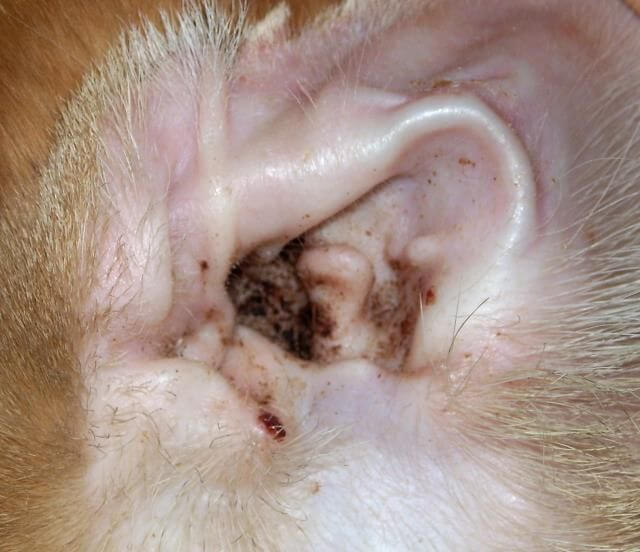animal hospital in lahore, animal hospital lahore, Best Pet clinic in Johar town, Pet care
Pet Ear Care – importance, identifying infections & how to clean them
We’ve all heard the fact that cats and dogs can hear much more frequencies of sounds than humans. For them, ears are some of the most sensitive yet distinctive body parts.
So, learning how to clean them is not only a handy skill that will fulfill your pets grooming needs, but it also helps identify any ear disease, infection or problems.
A healthy ear appears to have an appropriate amount of hair on it. From the inside, it is pale pink, having no odor and minimal wax buildup.
Why is ear cleaning important?
Cats and dogs depend largely on their sharp sense of hearing to communicate and understand what happens around them. The condition of their ears can increase or decrease their functionality greatly.
Cleaning the ears helps you figure out early symptoms of disease and infection. It also prevents them from happening in the first place.
More importantly, the two deep ear canals (horizontal and vertical) are shaped in a way that materials cannot come out of them easily unless they are cleaned. If the materials aren’t cleaned, they will lead to complications.
Which pets require ear cleaning?
Many dogs and cats don’t ever need their ears to be cleaned, but some of them need it more than others. This depends on the situation. Some pets that need more attention will have:
- Ear allergies
- Natural ear anatomy issues
- Large, drooping ears (usually dogs like Labradors)
- Commonly occurring ear infections
- More furry ears (especially the insides)
(Pets that were strays which have remained in dirty environments or sick/old ones that can’t groom themselves well should also have their ears checked.)
Whatever the case, you should routinely clean your pets ears for any signs of infection.
HOW TO IDENTIFY INFECTIONS
Ear infections are the leading reasons why people take their pets to the vet. They are commonly occurring conditions and may affect either or both ears.
Pet owners can easily identify early signs of infection and will know that there is a problem. The pet will be overall uncomfortable when this happens. Symptoms include:
- Irritation or aggression
- Constant scratching
- Unpleasant odor
- Colored discharge
- Constant shaking of the head
- Excessive wax accumulation
- Hearing difficulties
- Painful to touch
- Loss of balance
- Redness or swelling
HOW TO CLEAN PET EARS
Here’s how you can safely and appropriately clean your cat or dog’s ears.
Things that you require:
- Ear cleaning solution (veterinarian approved and made specifically for the cat or dog)
- Cotton gauze pads/ cotton ball
- Gloves
- Towel or blanket
Steps for cleaning:
- Sit down and hold the pet in a way that is comfortable. Talk to them gently to calm them down.
- If they move around a lot, use the towel or blanket and wrap them in it.
- Wear the gloves so you don’t come in contact with any fluid or bacteria.
- First examine the outside of the ear for any signs of infections (mentioned above).
- Hold the tip of the ear away from the head so that it exposes the internal ear canals. Exam and smell the inside of the ear too.
- Pour the ear solution into the ears slowly and fill the ear canal with it. It is fine if some of the solution spills out of the ear.
- While still holding the outer ear, massage the base for a few seconds to break up wax and debris inside the ear. While massaging, a ‘squishing’ sound can be heard.
- Use the cotton ball/gauze to wipe any dirt or wax as far as you can see in the inner ear. Remember to wipe the dirt out of the ear rather than pushing it further inside. Do not go too far.
- Let the pet shake their head so that the solution moves in and the dirt comes out of the ear. Wipe any remaining materials with the cotton ball again.
- Repeat this with the other ears.
Additional Tips for Cleaning
- Pets usually trust their owners when being groomed but if you have a bigger or more energetic pet you can get help from another person to hold the body or mouth.
- Never use q-tips to clean the ear or remove solution from the ear. This is because they are very thin and may push wax or dirt further in the ear. If the pet moves, the q-tip can go too far and damage the ear canal.
- Only use solutions made specifically for the cat or dog. Do not use cat solutions for dogs and vice versa.
- Do not use human solutions or home cleaning remedies without consulting the vet or researching.
- If the pet seems to be very aggressive or uncomfortable, do not push them to get the ears cleaned. This could lead to accidents or injuries. Leave this to be handled by an experienced vet.
We offer many grooming facilities apart from ear care including bathing and dental check-ups. Book an appointment at Petsworld now.

